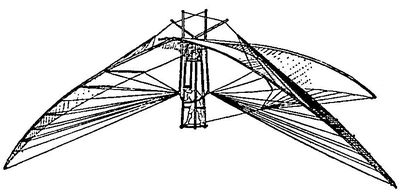
This information is added by users of ASN. Neither ASN nor the Flight Safety Foundation are responsible for the completeness or correctness of this information.
You can contribute by submitting additional or updated information.
| Date: | Thursday 9 July 1874 |
| Time: | day |
| Type: |  The Czar Gas Balloon |
| Owner/operator: | Private |
| Registration: | Unregistered |
| MSN: | |
| Fatalities: | Fatalities: 1 / Occupants: 2 |
| Other fatalities: | 0 |
| Aircraft damage: | Destroyed |
| Location: | Sydney Street, Chelsea, London -
 United Kingdom United Kingdom
|
| Phase: | Initial climb |
| Nature: | Private |
| Departure airport: | Cremorne Gardens, Lots Road, Chelsea, London |
| Chingford, Essex | |
| Confidence Rating: |
On 9/7/1874 the Gas balloon "The Czar", owned and operated by Joseph W Simmons was involved in a fatal accident. It was carrying a Winged "Ornithropter" apparatus, which collapsed when released from balloon, over Chelsea, London. Vincent de Groof, alias 'The Flying Man' (agd 35) was killed. According to published reports:
"In June 1874, a peculiar sight could be spied over Chelsea. A balloon hovered a kilometre above the ground with the most curious of payloads dangling beneath: a gigantic bat with a human at its controls.
This Victorian Batman was M Vincent de Groof, otherwise known as "The Flying Man" or "L'homme Volant". Newspaper accounts of this ambitious individual contradict in almost every conceivable way. He was either Belgian or French, sometimes Dutch. He was aged either 35 or 36. He'd had success with his flying contraption on the Continent, or else he'd rarely left the ground. Some accounts suggest he'd made a successful flight over Epping Forest a week before, yet seemingly nobody witnessed the feat. Whatever the details of his biography, he was now set on piloting his fragile wings through the skies of Chelsea.
The unfortunate inventor had constructed a pair of wings made of cane and silk, each 37 feet long by 4 feet wide, and also a tail 18 by 8 feet in dimensions. The wings were inserted into two hinged frames, which were attached to a wooden stand, upon which the aeronaut stood and manipulated them by means of levers. The theory was that, when started from any high altitude, the machine would reach the earth by a very gentle incline, passing over a great distance and eventually landing without concussion.
The balloon, known as Czar, had taken off from Cremorne Gardens, a pleasure garden close to the future site of Lots Road power station. Its dangling cargo was built from cane and waterproof silk, with a complex network of ropes and pulleys to be operated by de Groof. At some point in the flight, de Groof was to cut the cord and part-flap, part-glide his contraption back to earth.
After hovering over the Thames for some time, the balloon pilot reduced the height to around 90 metres in preparation for separation. The decent came so low, in fact, that de Groof's bat contraption was swinging dangerously close to the tower of St Luke's church, just north of King's Road.
At this point, press reports again diverge in detail. Perhaps sensing he would hit the church, perhaps by accident, or maybe because he was ready to begin his stunt, de Groof cut the rope. His batwing immediately flipped over and the unfortunate aeronaut tumbled to the ground, landing in what is now Sydney Street.
Some accounts suggest that he was killed immediately. Others say he lived long enough to be carried to Chelsea hospital where he later expired. One article, in the Illustrated Police News, affords him a few final moments of consciousness with his distraught wife. He can't have lingered long, given that the subsequent inquest described his broken neck and caved-in skull.
There was almost a second tragedy. As soon as de Groof was loosed to his death, the unburdened balloon shot into the air, eventually reaching such a height that the pilot, Mr Joseph Simmons of Regent Street, passed out. On regaining consciousness, he found himself over Victoria Park, eventually coming down on railway tracks a mile from Chingford, narrowly missing a train.
A somewhat shambolic coroner's inquest (one of the jury was found to be in the employ of Cremorne Gardens) apportioned no blame to the tragic accident. The wreckage from the crash was advertised for sale in Bruge the following February, and de Groof, the lamentable would-be Batman, was buried in Brompton Cemetery"
Sources:
1. http://www.rcawsey.co.uk/Acc1916.htm
2. http://londonist.com/2013/04/batmanchelsea
3. https://www.alamy.com/stock-photo-on-june-29-1784-vincent-de-groof-the-flying-man-lost-his-life-recently-103984688.html
Media:
Man-powered ornithopter that was made by Belgian shoemaker Vincent de Groof in 1874.

Revision history:
| Date/time | Contributor | Updates |
|---|---|---|
| 22-May-2009 12:58 | XLerate | Added |
| 05-Jun-2009 02:15 | angels one five | Updated |
| 25-Jan-2014 19:30 | TB | Updated [Aircraft type, Registration, Cn, Operator, Location, Country, Source, Narrative, ] |
| 13-Feb-2014 16:50 | TB | Updated [Date, Aircraft type, Operator, Total fatalities, Total occupants, Other fatalities, Location, Country, Phase, Nature, Departure airport, Source, Damage, Narrative, Plane category, ] |
| 15-Feb-2017 18:35 | Dr.John Smith | Updated [Date, Time, Aircraft type, Registration, Cn, Operator, Total occupants, Location, Country, Phase, Departure airport, Destination airport, Source, Embed code, Narrative, ] |
| 15-Feb-2017 18:36 | Dr.John Smith | Updated [Narrative, ] |
| 13-Nov-2018 01:25 | Dr.John Smith | Updated [Source, ] |
Corrections or additions? ... Edit this accident description
The Aviation Safety Network is an exclusive service provided by:


 ©2025 Flight Safety Foundation
©2025 Flight Safety Foundation